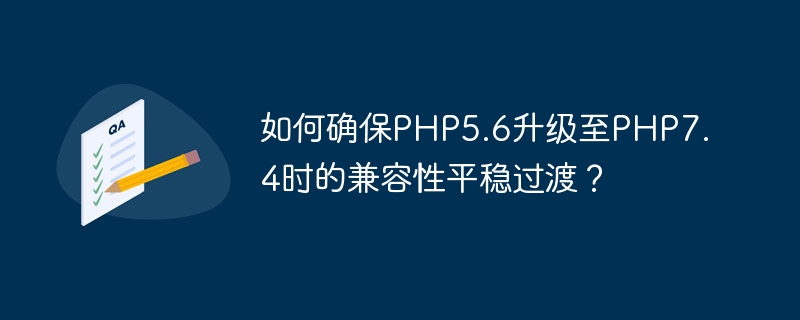

How to ensure smooth transition of compatibility when upgrading PHP5.6 to PHP7.4?
With the continuous development of PHP technology, PHP7.4 has been released, and many people are beginning to consider upgrading their applications from PHP5.6 to PHP7.4. Although PHP7.4 brings many improvements and optimizations, you may encounter some compatibility issues when upgrading. Before proceeding with the upgrade, we need some strategies and tips to ensure a smooth transition of compatibility. This article will share some methods to help you navigate the process.
The following is a simple example showing some compatibility issues and solutions between PHP5.6 and PHP7.4:
// PHP5.6代码
function getName()
{
return "John Doe";
}
// PHP7.4代码
function getName(): string
{
return "John Doe";
}In this example, we assume During the upgrade process, you will encounter a problem with the return type of a function. In PHP5.6, the return type of a function is implicit, and the getName function can return any type of value. However, in PHP7.4, we can explicitly specify the return type as string. Therefore, during the upgrade process, you will need to modify your code to accommodate the new return type.
Summary:
Upgrading the PHP version is a necessary process to maintain the advancement of our applications in technological development. However, such an upgrade process may face some compatibility issues. By understanding new features and changes, using upgrade detection tools, gradually upgrading, and fixing potential issues, we can ensure a smooth transition from PHP 5.6 to PHP 7.4 compatibility. Before upgrading, allow time to test and resolve compatibility issues to ensure your application will run properly on the new PHP version.
The above is the detailed content of How to ensure smooth transition of compatibility when upgrading PHP5.6 to PHP7.4?. For more information, please follow other related articles on the PHP Chinese website!




